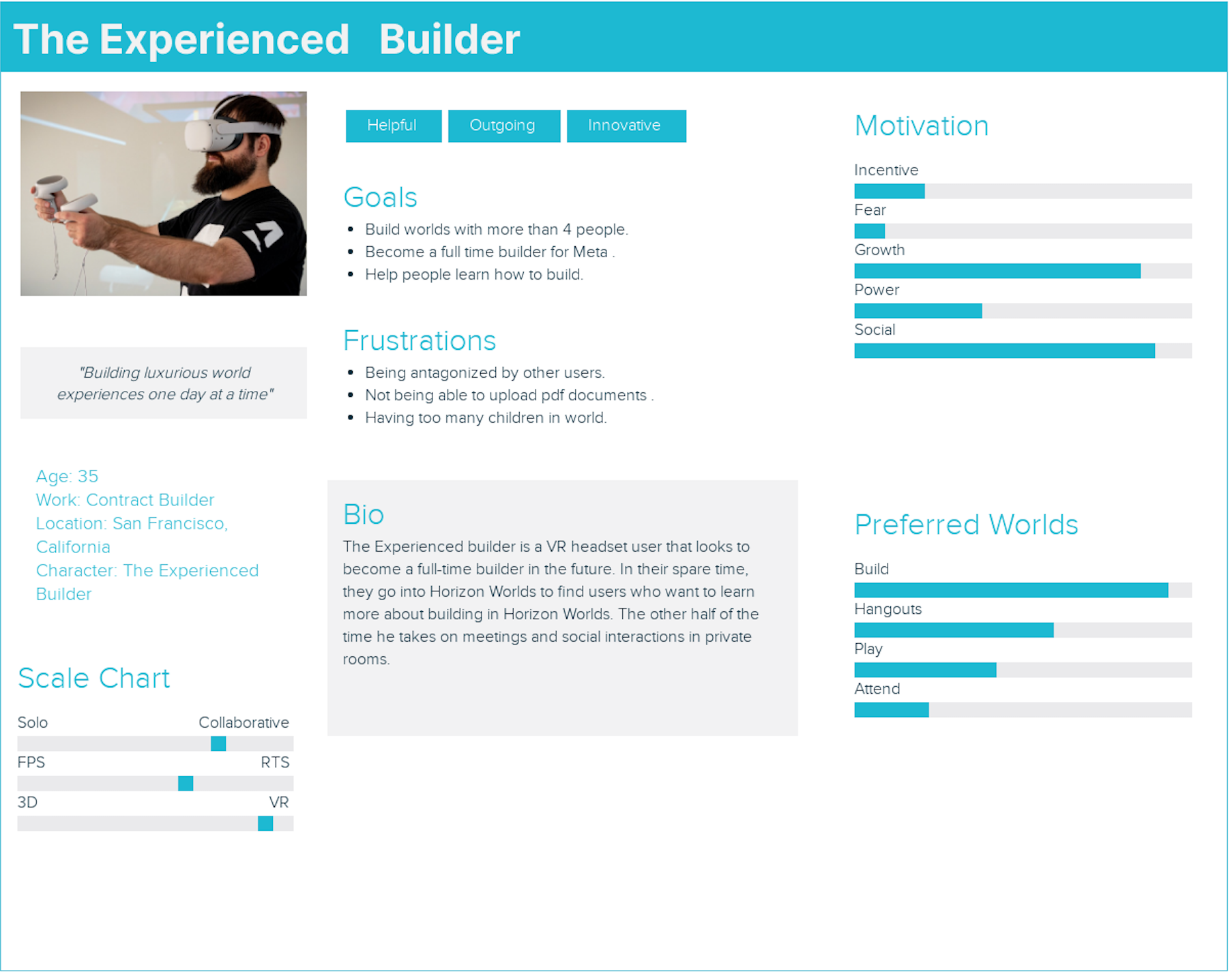
Better Assets → Better Worlds → More World Engagement
Background
In 2021, Facebook changed its name to Meta and announced a shift towards prioritizing the "metaverse." Meta's founder, Mark Zuckerberg, believes that in the next ten years, people will spend time in a fully immersive 3D version of the internet, which will become the center of a new virtual economy.
The Meta Quest 2 headset is crucial to this metaverse concept. It is created by Meta and allows users to access numerous virtual reality experiences. One of these experiences is Horizon Worlds, also produced by Meta. Horizon Worlds is a social platform within virtual reality where users can play games, attend events, and create their own virtual worlds. Currently, only users with the Meta Quest 2 headset can access Horizon Worlds. However, Meta has proposed including mobile users to foster a vibrant community.
My Role
As a UX Designer and Researcher, I led some of the research and design process. I interviewed users, analyzed ideas, collected visual elements from VR apps, collaborated on designs, and presented them to clients. Additionally, I took charge of design specifications during usability studies. Meta wanted to speed up and streamline world-building. After conducting usability interviews and finding valuable insights, the team agreed that designing a companion app would be the optimal product going forward.
Methods
As a team, in the discovery research phase, we focused on understanding VR, Horizon Worlds, the problem space, and scoping. After scoping the problem we focused on informing design
and understanding what features the mobile app needs. We used a mixed-method approach by implementing:
● Activity Analysis ● Moderated User Interviews
● Competitive Analysis ● Co-Design Session
● User Surveys ● Usability Testing
Challenges
Research uncovered specific user problems that the mobile device form factor can address:
● Less experienced world-builders face a high learning curve
● Builders are forced to stop after 45 minutes in VR due to device fatigue.
We conceptualized a mobile companion application that allows users to scan real-world objects and bring them
into the VR space using AR and their mobile camera. The solution removes friction from the onboarding while
prompting engagement from a mobile device.

Design Process
“ How might we increase user engagement in Horizon Worlds via mobile devices?”
Design Constraints
The Winter Quarter research helped us find the best way for Horizon Worlds users to stay engaged and improve their world-building on mobile using a companion app.
World Consumers want immersion that only the headset can provide
World Creators want more build time but feel limited by headset fatigue
Object Scanning provides a focused scope, leverages capabilities unique to mobile
Design Principles
-
Making meaningful progress in world-building
-
Previous users will feel at home
-
The phone is fulfilling its normal functions
-
Excitement about returning to build in Horizon Worlds
Primary Persona
Co- Design
The Co-design sessions were designed around the wireframe. Participants were instructed to sort cards into button categories, as well as imagine potential utility of a mobile app.
Card Sort
Prototypes
Iterative Design Process
We tested 6 participants against the following scenarios:
App Tutorial
Run through the prototype’s tutorial sequence and say what it does.
Scanning an Object
Successfully scan an ottoman object and add it to your
asset library.
Re-scanning a Poorly-Scanned Object
Scan an object, and check to see if your object looks
bad. If not, rescan it.
Usability Testing
Next, we designed a 30 minute usability test to explore usability issues with our medium fidelity prototype.
We tested against our predetermined design principles:
Enhance Builder Engagement:
Qualitative: Does this design provide utility to the build cycle?
Qualitative: Does it make meaningful progress in building?
Native-to-Mobile:
Qualitative: Do the app interactions feel intuitive?
Qualitative: Do the app icons make sense?
Builds Anticipation:
Qualitative: Are mobile users excited to try the headset?




